Every committed hiker has had some frustrations with gear, be it socks that chafed or boots that started to fall apart before the summit. Not everyone follows through with resolutions made back at the trailhead to come better equipped next time. But Tom Chappell, best known (for now) as the co-founder of Tom’s of Maine? This formerly frustrated hiker built a whole company to fix that gear problem. And also, with an eye toward reinvigorating America’s flagging apparel industry, sustainably.
He’d taken a two-week-long trek through Wales in 2008 with his son Matt, now the owner of Gather restaurant in Yarmouth, during which he felt let down by his high-tech hiking garments. They weren’t sufficiently warm, didn’t stay dry and quite frankly, didn’t smell so good. Within weeks of his return he had purchased a spinning machine to experiment with wool fibers at home and was researching making lifestyle clothing in the United States, with natural, sustainably milled and manufactured fabrics.
Flash forward to February 2017. Chappell is standing in Ramblers Way’s newest store in Portsmouth, New Hampshire, the third in what he promises is a rapid-fire bricks-and-mortar expansion over the next two years (a store should open in Portland’s Old Port by May). He’s surrounded by garments mostly made from the wool he decided was optimum for not just hiking in Wales, but for everyday wear (they also sell some organic cotton garments). He’s wearing a Ramblers Way Maine-made jersey knit shirt – deep red because it’s Valentine’s Day – and designed to be worn next to the skin without being itchy. Over that’s he’s got a button-up shirt in a checked, heavier weight wool, cut and sewn in North Carolina.
He’s pleased as punch by his ensemble but willing to admit to traveling a steep learning curve over the past eight years of trying to source and then make sustainable, “slow” even, fashion from very specialized wool. It’s been humbling, he says. And a much greater challenge than coming up with the all-natural toothpaste that made him famous.
“Exponentially greater,” Chappell said. “If you can imagine mixing toothpaste ingredients in a dish – you can at least find your ingredients pretty readily.” When Tom’s of Maine toothpaste was in its development stages, there were issues of efficacy to consider and tinkering involved, but he wasn’t reinventing the wheel. With Ramblers Way, which he got serious about in 2009, it sometimes felt that way. That year was the nadir of the American apparel industry in terms of production, according to the American Apparel and Footwear Association. Today American-made apparel accounts for only about 2.7 percent of the entire U.S. apparel market, but that represents gains in recent years, up 50 percent from 2009.
“The industry was practically extinct,” Chappell said. Hardly any U.S. manufacturers were working with wool at that point, except men’s suit manufacturers and Smart Wool, with its niche in socks. The recession was in full swing. “It was the worst time ever to start a risk-taking business.”
But his plan to engage full time in philanthropy after selling Tom’s of Maine to Colgate-Palmolive in 2006 for $100 million, was not enough to fulfill him. He wanted to create new jobs. He wanted to jump-start a once proud segment of the American economy. And he wanted better hiking clothes.
So Chappell pushed on, believing that his entrepreneurial instinct was good. “My father would say, ‘Fools rush in where angels fear to tread.’ ”
CLICKETY CLACK
Part of Chappell’s youth was spent in Uxbridge, Massachusetts, where his father ran a woolen mill. The young Chappell worked there in the summers to earn money for school. “I know what it is like to walk through a mill on a Saturday morning with my father,” he said. “I know what it is like to walk through a weaving room with the clickety clack of the weaving machines. I love textile mills, so there was not a great surprise to me about how all that is done.”
What was surprising was that those machines were mostly gone.
“You think about the lost talent and the generations of lost talent, but you don’t expect that the machinery would have been sold to Asia, but it was.” Moreover, Chappell’s plan to build a second company around his core values – making a profit yes, but only within a model that was good for the earth and for people – ran into complications at every turn. He wanted the clothes to be made in the United States, ideally within 300 miles of Maine – that’s the standard they’re still working toward – and he also wanted his fabrics to be American. Yet unlike any fabric that was being made in the U.S. He wanted it to be finer, denser and comfortable against the skin.
His research led him to the Rambouillet breed of sheep, which produce fibers so thin and soft that if woven properly can feel almost like a fine jersey. Like all wools, the fibers are hollow, which provide an insulating effect for warmth and wick moisture without allowing bacterial growth (ie, cutting down on the smell factor). With this particular breed of sheep, the premium fibers are what’s known as U.S. grade 80s, very thin (less than half the diameter of a human hair) and long enough to weave together. Chappell was excited. With the help of the American Rambouillet Sheep Breeders Association, he pulled together a list of Western ranches that might have enough quantity to serve a clothing business.
Then he enlisted the help of his son-in-law Nick Armentrout, a farmer himself who had spent a few years in Idaho and knew the West. Seven months after that fateful hiking trip, the two men were disembarking from a rental car at a ranch in Southeastern Montana, introducing themselves to a rancher who was raising Rambouillets primarily for their meat. From there they traveled to Nevada to meet another rancher. Most of these Western ranchers were shipping their wool, 70 percent of it, overseas to clothing manufacturers. But they were willing to talk to the guy who had made his name in all-natural toothpaste. And maybe they’d consider selling him some wool.
In Texas they met with a wool producers’ cooperative. There they got a lesson in how wool is sorted. Armentrout was fully committed to the hunt for the right fibers by then, but both men were realizing it wasn’t going to be easy. They even had to name drop to get the attention of the businesses who did the carding and sorting, on an industrial level as opposed to a craft level,
Initially, “they really didn’t answer our calls,” Chappell said. “When they knew that Tom’s of Maine was on the other end, they began to correspond with us.”
But they encountered some wet blankets. Like the mills that told him his request for “something that is very lightweight and very soft” probably wasn’t possible. At least not as lightweight and as soft as he wanted.
Nevertheless, he persisted. “I would say, ‘That is OK, I want to talk to people who want to try because I am not changing my expectation of my vision of what I want.”
SUPPLY SIDE
Breeders who specialize in Rambouillet sheep are scattered across the country, but the majority are in the West, where as Chappell points out, the sheep largely graze on government-owned ranch lands. It’s arid and that’s fine with the sheep. They’d do just fine in a place like Maine, but they don’t need lush New England grass to thrive. At one point, Chappell almost brought 1,500 head of Rambouillet sheep home to Maine with him.
“We had identified the ranch we wanted to resource the sheep from,” Armentrout remembered. “And we were really happy about the prospect.”
But while Chappell jokes about fools rushing in, that plan didn’t come to fruition. Land wasn’t cheap enough, for one thing.
“We had to make a decision, do we want to be an apparel company or do we want to be a sheep farm?” Armentrout said. “Because we couldn’t be both. We found that we were never going to find the volume of sheep that we needed. We couldn’t own every step of it.”
They settled for buying from ranchers who were giving as much attention to the fiber part of their sheep program as the meat side; it took some digging though, Armentrout says.
Once they found a reasonable source of the Rambouillet wool and a means to clean and sort and spin it sustainably, Chappell moved on to design plans.
“That is where I came in,” says Eliza Chappell, the fourth of Chappell’s five children. She’d worked in the family business before, but fashion spoke to her on a deeper level. “I love apparel,” she said. “It’s a lot more interesting to me than toothpaste.”
While she’d studied textiles and done some weaving – including spending time at Haystack in Deer Isle – she had no design background. Eliza Chappell decided she needed to go back to school to get the fundamentals. She studied fashion at Parsons School of Design in New York City, and found a professor, Victor Soto, who mentored not only her, but in a sense, Ramblers Way.
“Every week I would come in and say, ‘We’re working on figuring this out.’ The class was sort of geared toward, what problem is Ramblers Way having right now?” Chappell didn’t complete the four-year program, but she brought Soto into the Ramblers Way fold; he steers production in Maine. Eliza Chappell designs the women’s collection – a halter top jumpsuit she dreamed up for an event is now a customer favorite – and a team of designers work on the men’s collection. Some of it is made in Maine, stitched in Kennebunk, and that’s a realization of her father’s dream to produce the clothing within 300 miles of Maine. But some of the trickier pieces, the highly shaped jackets, for instance, are sewn in New York.
Now they’re about to take two big leaps, one that changes where they source the wool and the other, the way they sell the clothes. For years, they’ve sold through roughly 400 independent retailers around the country, including in Maine, places like Joseph’s in Portland and Jill McGowan and Cuddledown in Freeport. Those haven’t always been effective ways of getting their message out, however.
“We have an amazing product, but it was hard to communicate that,” Eliza Chappell said. “You are relying on that one sales clerk.”
What she and her father want are clerks who can tell the story. This sheep from that place produced this wool, which was turned into a fine thread and then woven and cut and sewn in the United States. And so on. Otherwise, it’s just a nice garment with a premium price. The sales clerks at the Ramblers Way stores will serve as “brand ambassadors.”
“People want to believe in something,” Eliza Chappell said. “They don’t want to just go in and make a transaction.”
“We are right at the cusp right now,” she said. “We changed our business model and are shifting to going right to the consumer, and I feel like it is really going to take off.”
They’ve already opened stores in Kennebunk, Hanover, NH, and Portsmouth (just last month). The Portsmouth store features an in-store tailor, who can custom-make most of the simple jersey items if something isn’t in stock. It’s also a few decorative nods to sustainability, like the old church louvers that frame the custom-made sign behind the register, or the bin from an old mill that has been repurposed into a giant ottoman.
Tom Chappell said he hopes to open 15 stores nationwide, including one in San Francisco, where another one of his sons lives, over the next two years. The hope is that the bricks-and-mortar stores will help drive online sales through the website as well. He said eliminating the middle man has allowed them to drop prices as well, by about 15 percent.
BIGGER THAN TOM’S
“I’m expecting Ramblers Way will be much bigger than Tom’s of Maine,” Tom Chappell said.
That confidence comes from a belief that consumers, at least those with disposable income, will embrace items like $400 fitted blazers and leisure pants that look like sweatpants but are made of sustainably grown and manufactured wool. Made in the United States.
“When I tell anyone in the business that we are made in America they look at me like I’m from Mars,” he said. “But that is what customers want these days. They are looking for ways to help their own communities. They are tired of being taking advantage of” by manufacturers who sell low-quality garments at high prices. And he’s also banking on them not feeling good about buying clothes made in say, Bangladesh, under terrible working conditions and in polluting factories and dye houses.
“We’ve figured out the supply chain,” he said.
Not without bumps.
“I have been humbled by the exactness of details required in making a nice fabric, creating a design that is appealing and attractive and then being sure that the quality of the cutting and sewing is superior and is worthy of a premium-priced product,” Chappell said.
The second change to their model is indicative of how challenging it is to make garments in America, at least ones manufactured to an exacting standard like sustainability.
Chappell has just gained an organic certification recognized worldwide, the Global Organic Textile Standard (GOTS); its processing standards fit with his values. For the time being, however, there’s only one factory in Germany that is GOTS-certified to handle the process that helps make Ramblers Way wool so soft. And rather than ship wool to Germany to be processed, he has opted to start importing European wools, moving toward a combination that will eventually be about 70 percent sourced from outside America. But still cut and sewn here, to GOTS standards. Chappell believes that growing demand for his style of fabric will eventually lead to more American producers getting certified by those standards. He believes, if he builds the organic demand, an American supply chain will follow.
In the meantime, he’s been hiking with all three of his sons as well as son-in-law Nick Armentrout, on a four-day scramble up and down hills in Newfoundland.
“We all had our Ramblers Way on,” he said. “Totally suited up.” Was he warm, dry and odor free?
“Not a problem what-so-ever,” he said. “It was very difficult backpacking though.”
Mary Pols can be contacted at 791-6456 or at:
Twitter: MaryPols
Copy the Story LinkSend questions/comments to the editors.


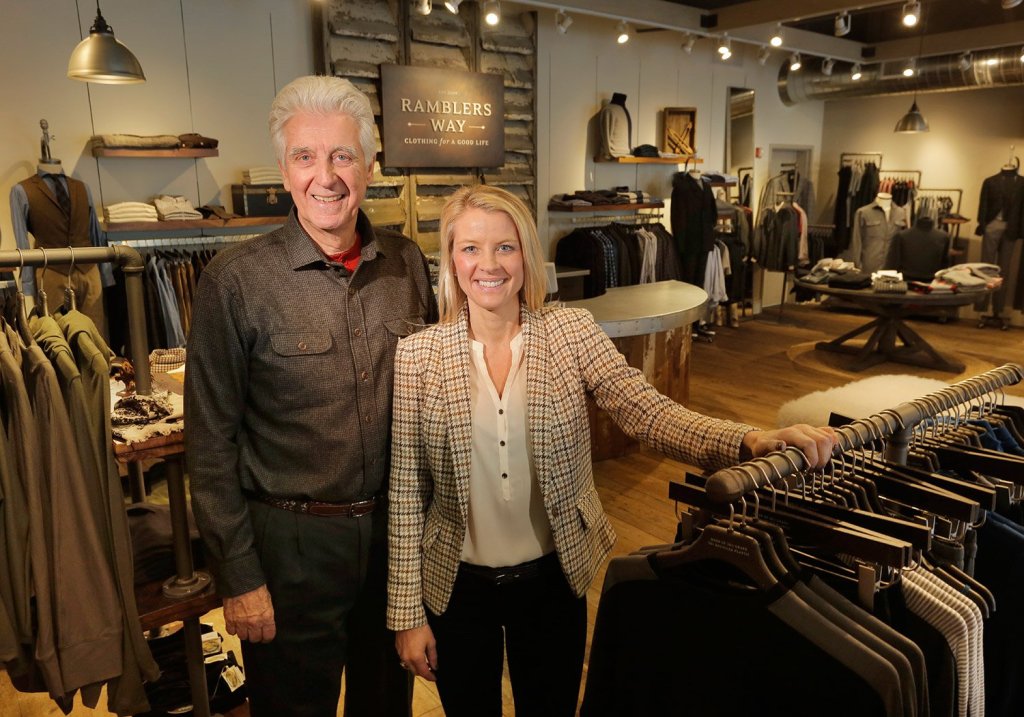
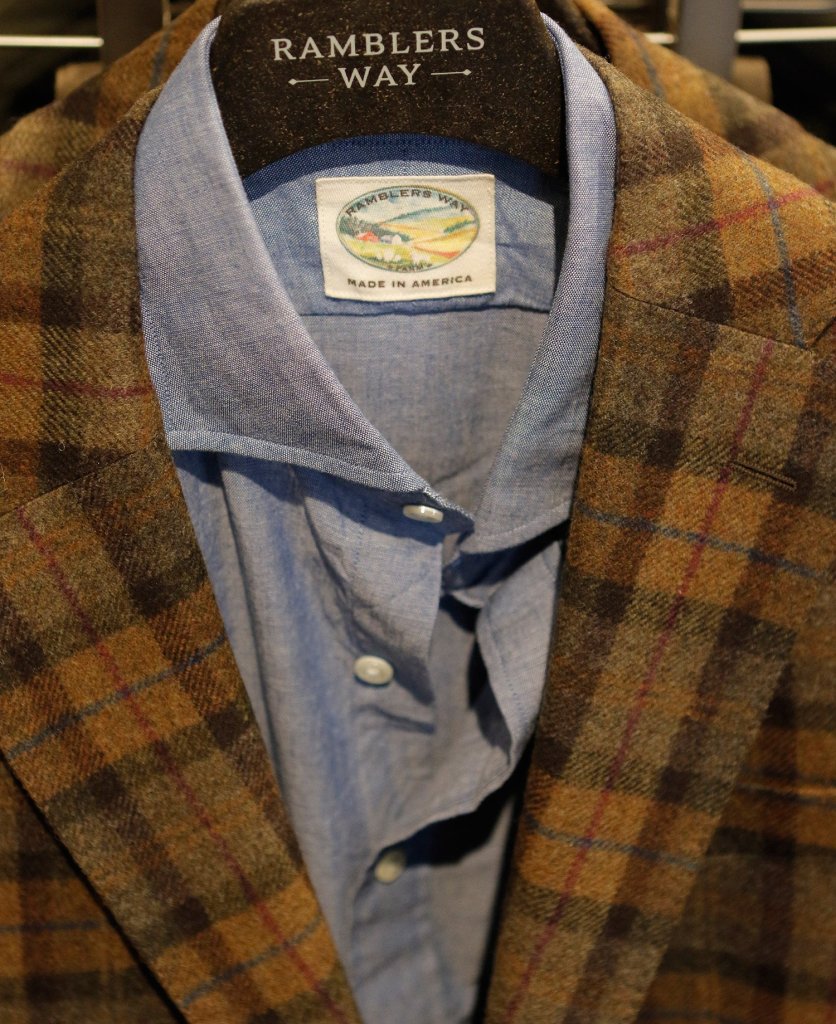
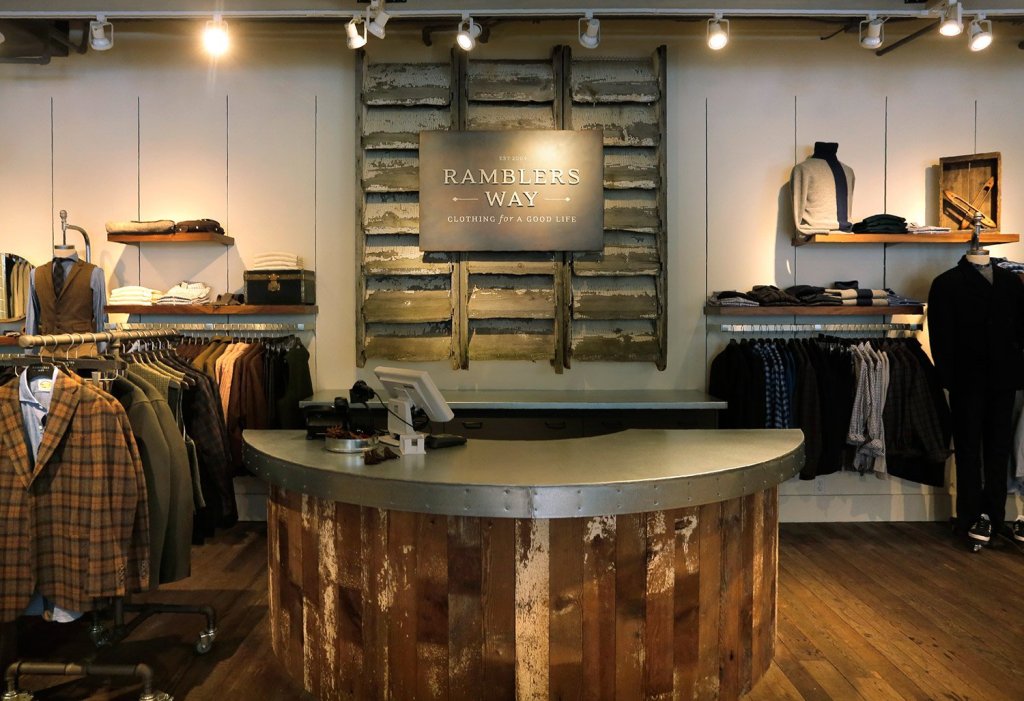
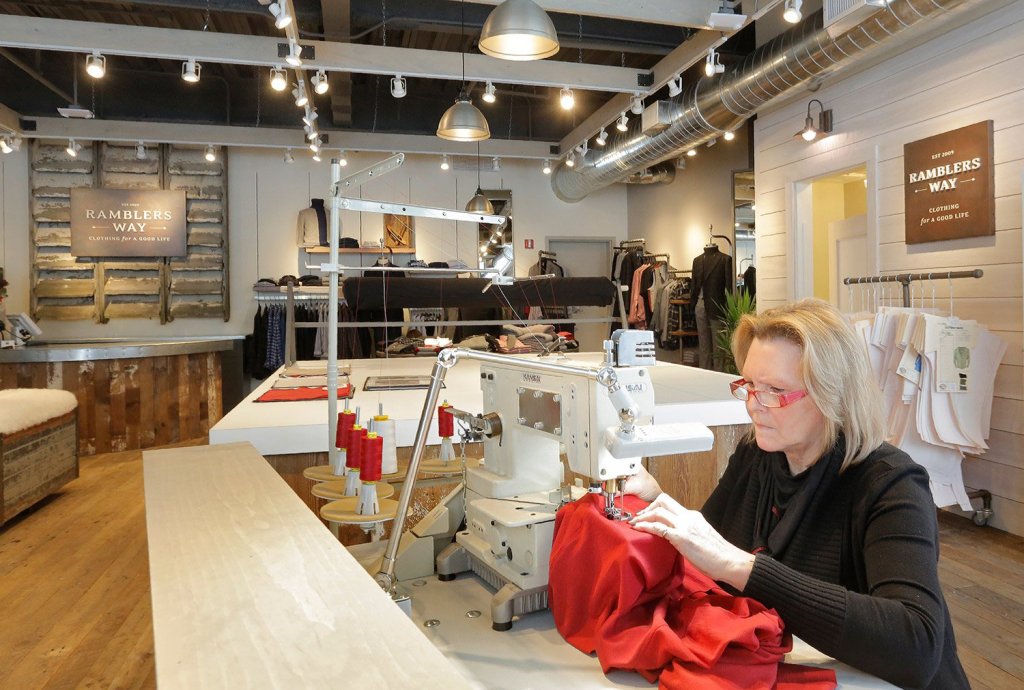
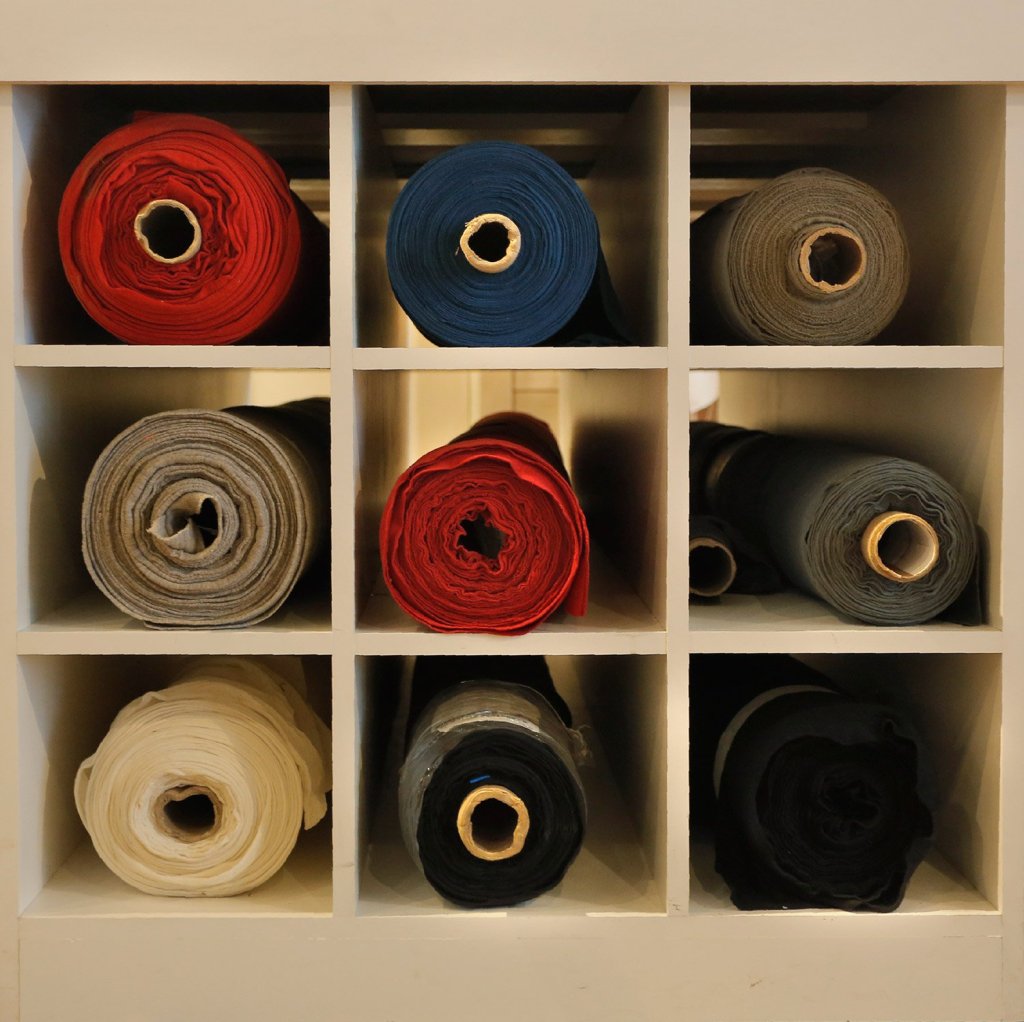
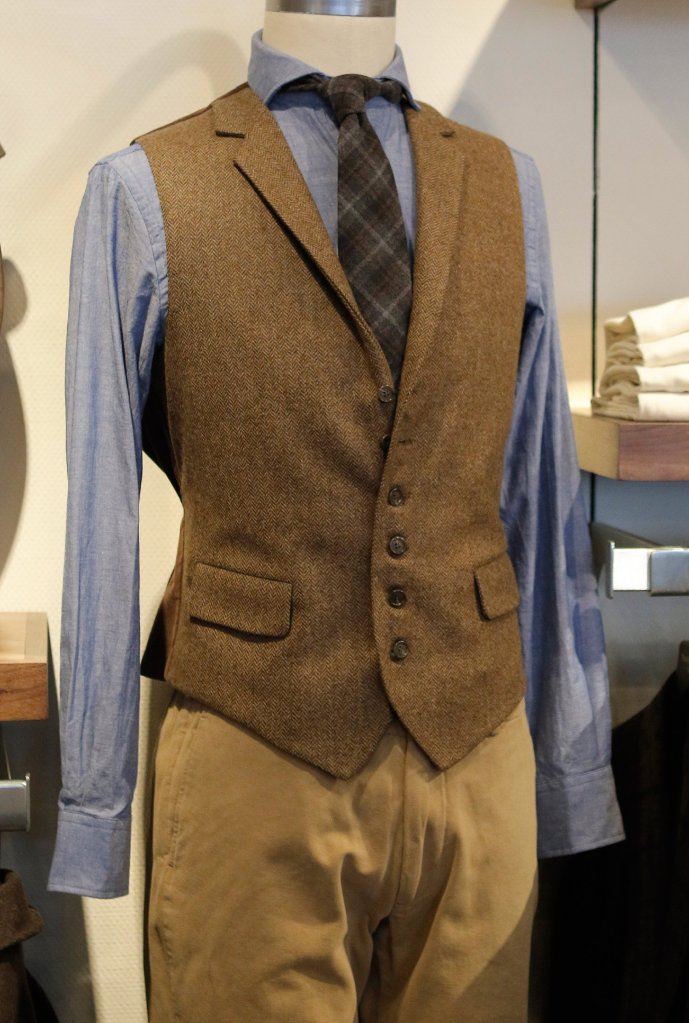
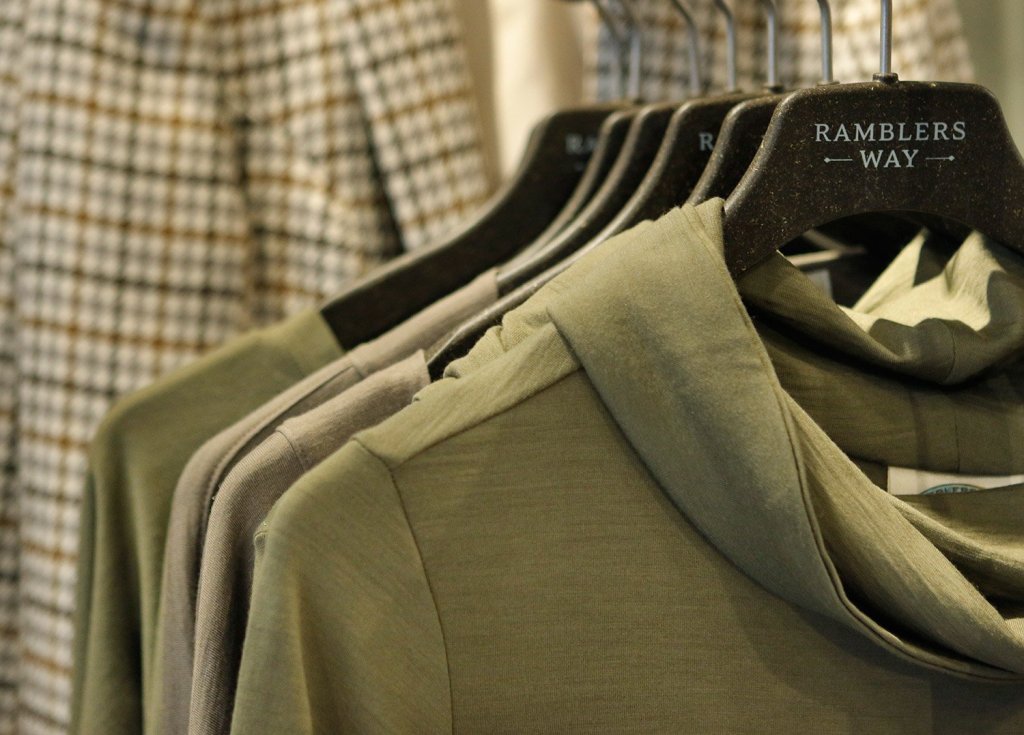

Success. Please wait for the page to reload. If the page does not reload within 5 seconds, please refresh the page.
Enter your email and password to access comments.
Hi, to comment on stories you must . This profile is in addition to your subscription and website login.
Already have a commenting profile? .
Invalid username/password.
Please check your email to confirm and complete your registration.
Only subscribers are eligible to post comments. Please subscribe or login first for digital access. Here’s why.
Use the form below to reset your password. When you've submitted your account email, we will send an email with a reset code.